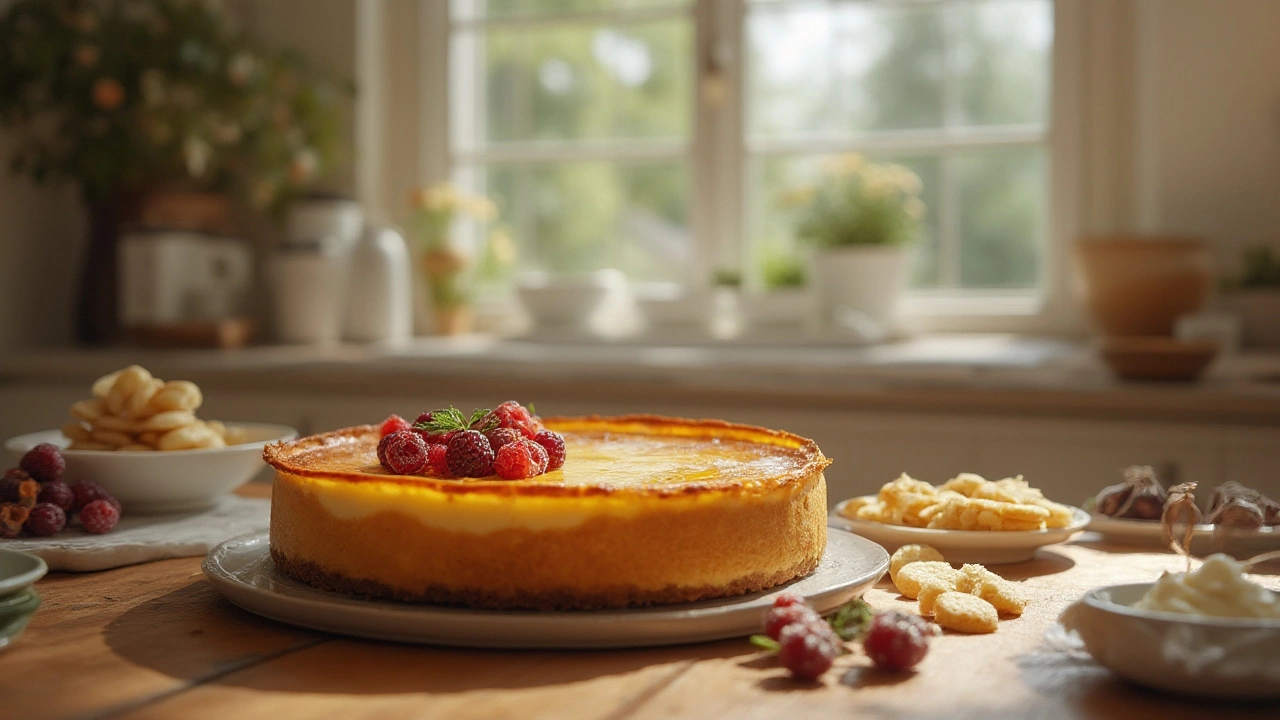
What Makes Cheesecake Taste So Good? The Delicious Science Explained
Ever wondered why cheesecake tastes so irresistible? This guide explores its creamy magic, secret ingredients, texture, and the science behind the perfect slice.
Cheesecake is a crowd‑pleaser that feels fancy but can be simple. The key is a smooth filling, a sturdy crust, and a little patience. Whether you’re making a classic New York slice or a fruity twist, the basics stay the same. Below you’ll find straight‑forward steps and clever tweaks to keep your cheesecake looking and tasting great every time.
Start with a crust that holds together. Crushed biscuits (graham crackers, digestive biscuits, or even Oreo crumbs) mixed with melted butter and a pinch of sugar work well. Press the mix evenly into the bottom of a springform pan and chill while you prep the filling. For the filling, blend cream cheese, sugar, and a splash of vanilla until smooth. Add eggs one at a time, mixing just until combined – over‑mixing can cause cracks.
Temperature matters. Bake the cheesecake in a water bath (a pan of hot water placed under the springform pan) to keep the heat gentle. This prevents the top from cracking and gives a silky texture. Aim for 325°F (165°C) and watch the edges set while the center still jiggles a bit. When you turn off the oven, leave the door ajar for an hour to let the cake cool slowly.
Mix‑ins are your playground. Swirl in chocolate, caramel, or fruit purees just before baking for a marbled look. After it’s cooled, top the cheesecake with fresh berries, a drizzle of melted chocolate, or a sprinkle of crushed nuts. For a glossy finish, brush a thin layer of apricot jam mixed with a little water over the fruit topping – it adds shine and helps the garnish stay in place.
If you want a no‑bake version, combine cream cheese, sweetened condensed milk, and lemon juice, then set it in a chilled crust. This shortcut is perfect for hot days when you don’t want to fire up the oven. Chill the whole cake for at least four hours or overnight for the best texture.
Storing cheesecake right keeps it fresh. Keep the cake covered with plastic wrap in the fridge and use it within five days. For longer storage, freeze slices on a parchment sheet, then bag them. Thaw in the fridge before serving – the flavor stays intact.
Now you have a solid foundation, a few flavor ideas, and storage tips to keep your cheesecake game strong. Grab your favorite crust, experiment with toppings, and enjoy a dessert that always feels like a treat.

Ever wondered why cheesecake tastes so irresistible? This guide explores its creamy magic, secret ingredients, texture, and the science behind the perfect slice.
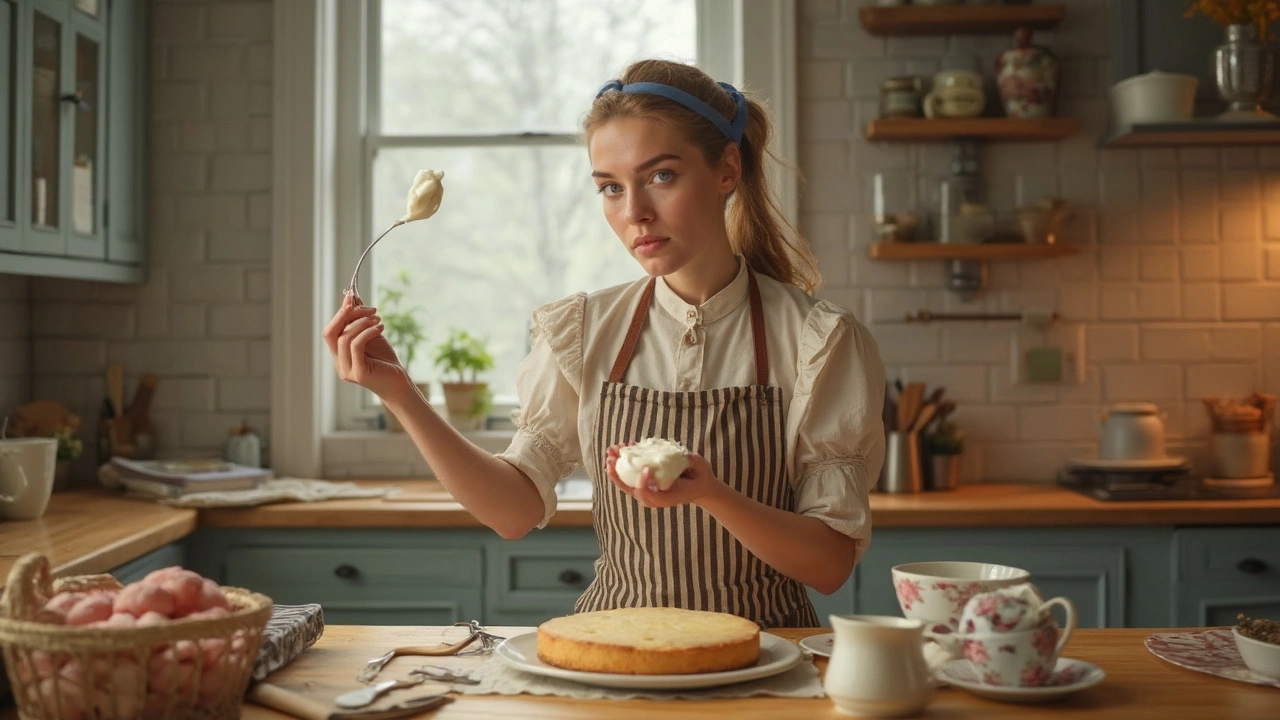
Ever wondered what goes wrong if you get heavy-handed with the sour cream in your cheesecake? This article lays out how too much sour cream affects the texture, taste, and structure of your dessert. You'll pick up smart tips for fixes and learn the best ratio for creamy, balanced cheesecake. Practical advice and a dash of fun make spooky mistakes less likely. Next time you reach for the sour cream, you'll know exactly how much to grab.
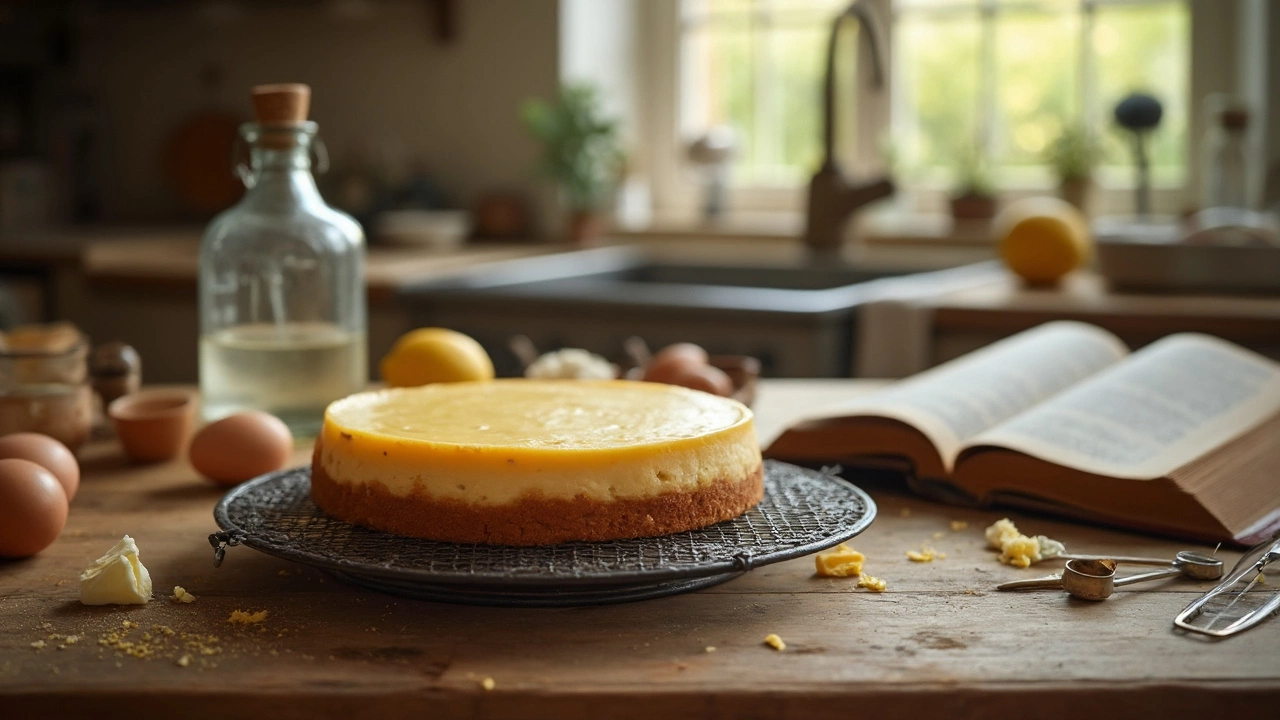
Ever wondered why vinegar sneaks into some cheesecake recipes? It’s not just a quirky trick—vinegar quietly works behind the scenes to balance flavors and guarantee creamy texture. Even a tiny splash can make a big difference in the final taste and look of your cheesecake. This article walks you through the real reasons bakers rely on this pantry staple. Plus, you’ll find tips on how to use vinegar the right way for perfect results every time.
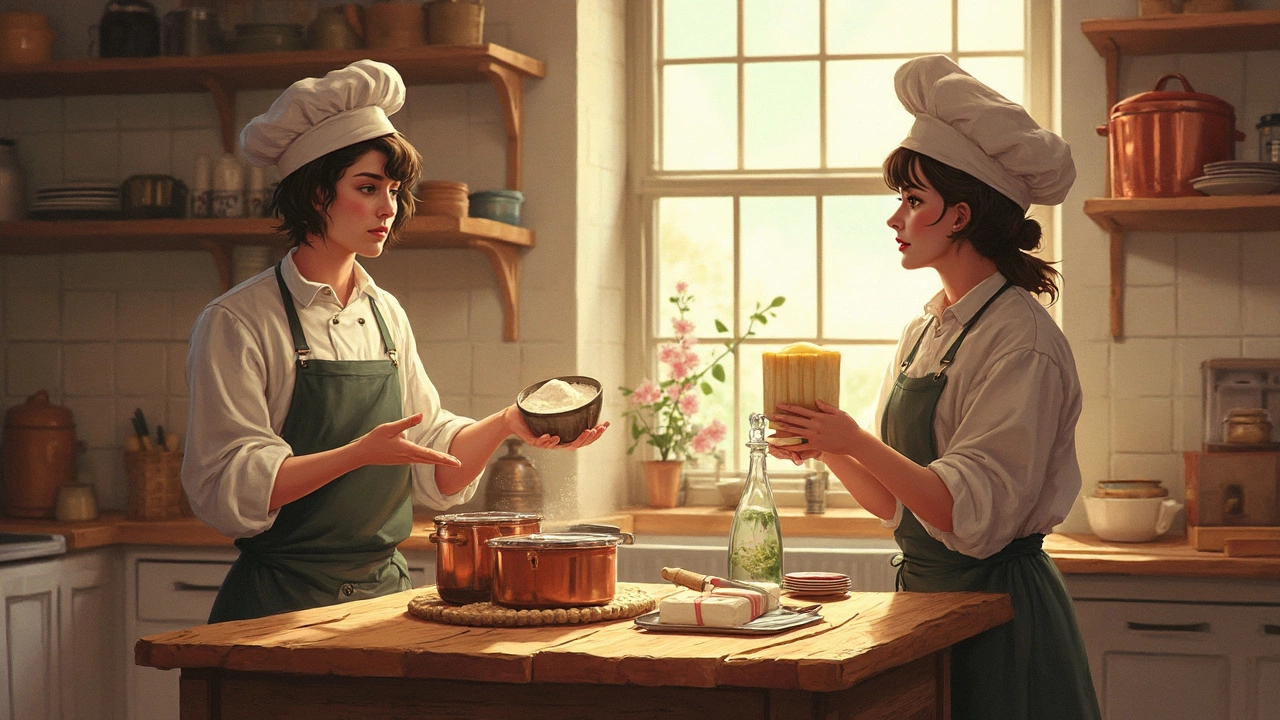
Choosing between flour and cornstarch can make a big difference in your cheesecake's texture and taste. Flour is more traditional, giving a denser feel, while cornstarch creates a lighter, creamier cheesecake. Both have their pros and cons, so it really depends on what you're aiming for. Understanding how each affects your cake will help you decide which ingredient to use.
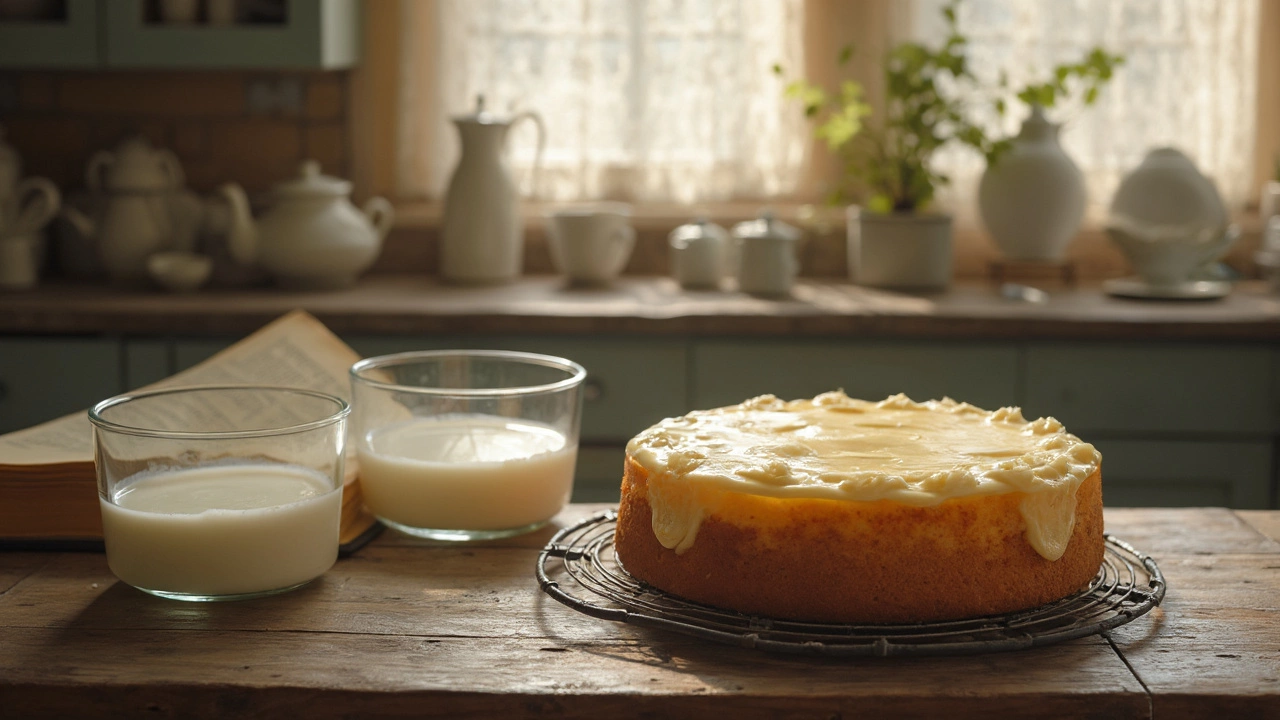
Deciding between heavy cream and whipping cream for your cheesecake can affect both texture and flavor. This article explores their differences, impacts on cheesecake, and tips for achieving the perfect consistency. Discover practical advice on which to choose based on desired creaminess and structure. Uncover the nuances of each type of cream for your baking needs.
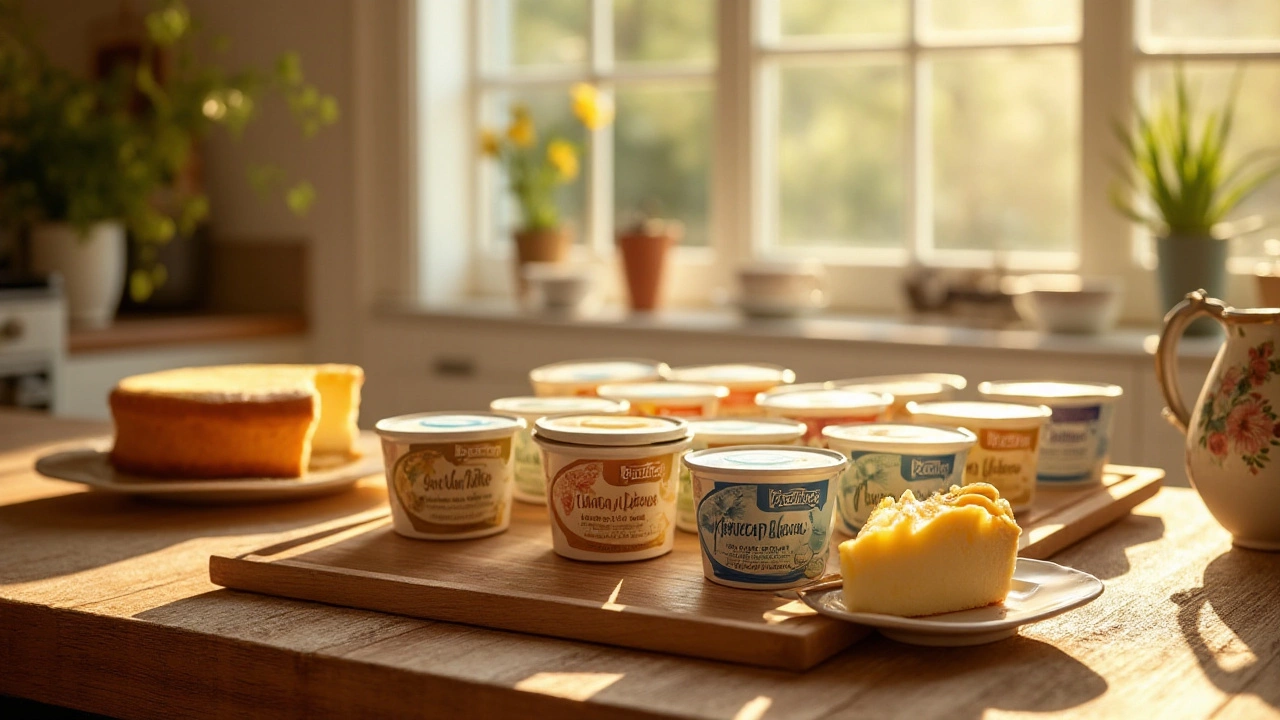
Choosing the right cream cheese can have a dramatic effect on your cheesecake's texture and taste. This article explores different types of cream cheese and their respective influence on the beloved dessert. Read on to discover how variations like full-fat, reduced-fat, and specialty flavors can elevate your cheesecake creation. Learn tips and tricks involving temperatures and combinations that perfect every bite of your slice. Let your next cheesecake shine with the right choice of cream cheese, tailored to your flavor preferences and dietary needs.
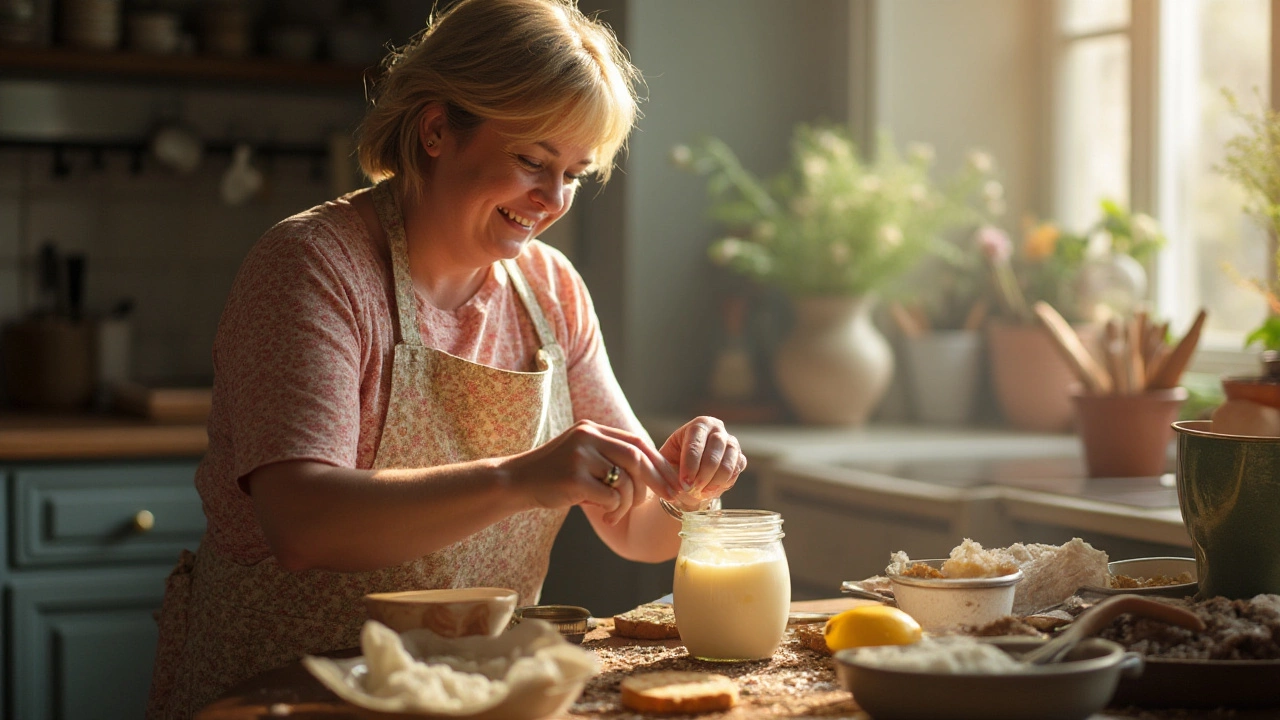
Exploring the idea of using mayonnaise instead of sour cream in cheesecake brings up intriguing flavor potential and texture changes. Discover how the creamy, tangy mayonnaise component can affect the traditional cheesecake recipe. This guide delves into the science of baking with unconventional ingredients and provides tips on achieving the perfect cheesecake with a twist. Whether you're out of sour cream or simply adventurous, this article will inspire a new take on a classic dessert.